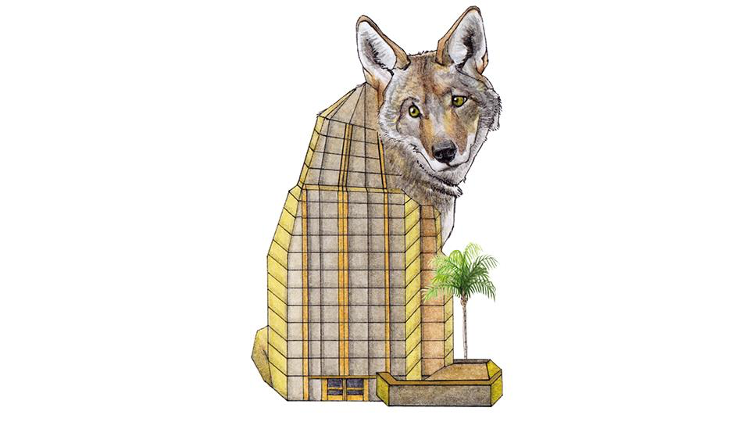The Challenge
Los Angeles County is known for its rich wildlife biodiversity in our natural areas such as the Santa Monica and San Gabriel mountains. Mammalian biodiversity has been declining for decades in the Los Angeles urban area due to human activity. As an important indicator of ecosystem health, mammals play essential roles in the food webs of every ecosystem. Since they feed at various levels of food chains, mammals help regulate populations of diverse plant and animal species and also take part in seed dispersal and plant pollination. Such a decline in population sizes and dynamics of mammals is also relevant since it can potentially alter pathogen load and diversity, which in turn poses health risks to humans, pets and other wildlife species.
To this day, the abundance of biodiversity and the population dynamics of mammals within the built urban environment of Los Angeles are both not well known. Additionally, public perceptions and their interactions with urban mammals such as raccoons, rats and opossums have not been previously characterized in the area. To address this knowledge gap, UCLA researchers take on a cross-scale research project to elucidate the biodiversity—urban ecology of mammals, their pathogen carriage and public perceptions of mammalian wildlife—within the urban Los Angeles County ecosystem.
The Solution
The project was comprised of an interdisciplinary team with the following objectives:
-
To map urban mammalian biodiversity for the Biodiversity Atlas of LA
-
To characterize population dynamics and gene flow within the city for key abundant species using population genomics
-
To assess locally abundant mammalian wildlife for the presence of pathogens harmful to humans, pets and other wildlife species
-
To understand humans’ perceptions of the values and risks of contact with urban wildlife, through interviews with a diverse selection of local experts (e.g. veterinarians, animal control professionals, private pest control services, urban gardeners, animal advocacy groups)
To meet these objectives, researchers conducted interviews to gather ethnographic data and collaborated with local organizations and government agencies such as the Los Angeles Public Health Department, the United States Department of Agriculture and the National Park Service to aggregate data on wildlife. Study findings will be organized into a final report while researchers also expect to produce several peer-reviewed journal articles.
Next Steps
The study’s diverse scope will provide an unprecedented view of urban mammalian ecology, public health risks, human-animal coexistence, wildlife conflicts and population dynamics in the Los Angeles region. The results of this project will help sustainability advocates to better understand about conservation of species and the everyday needs of the residents. Furthermore, the project’s wildlife pathogen research will help wildlife agencies better manage local wildlife populations while also informing veterinarians and public health officials.
Additional Outcomes to Date
Throughout 2018, the project team presented their research at the Wildlife Disease Association Annual Conference, the Institute for Society and Genetics and the UCLA graduate student symposium on urban animals.

Research Team
Jessica Lynch Alfaro
Anthropology, Social Sciences
Institute for Society and Genetics, Life Sciences
jlynchalfaro@ucla.edu
Anthony Friscia
Integrative Biology and Physiology, Life Sciences
tonyf@ucla.edu
Jamie Lloyd-Smith
Ecology and Evolutionary Biology, Life Sciences
Institute of the Environment & Sustainability
jlloydsmith@ucla.edu
Christopher Kelty
Anthropology, Social Sciences
Institute for Society and Genetics
ckelty@ucla.edu
Katherine Prager
Ecology and Evolutionary Biology, Life Sciences
kcprager@ucla.edu
Sarah Helman
Ecology and Evolutionary Biology, Life Sciences




